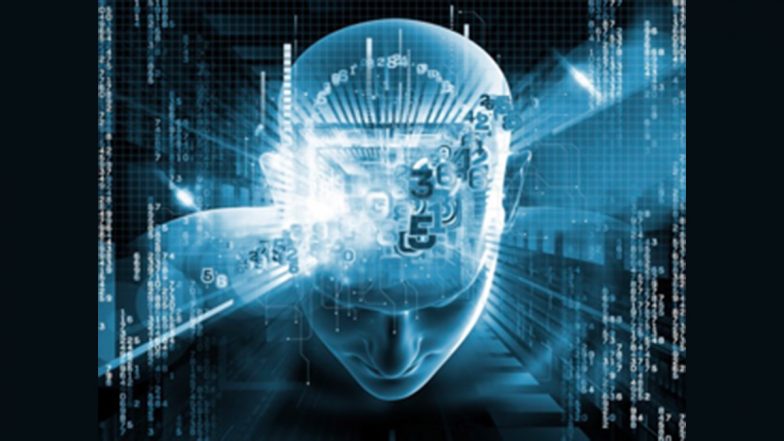
Meet the Siri of Trading
Have you ever checked your iPhone notifications only to be surprised by a suggestion from Siri to log your steps? Even more strange, it’s like Siri knows that you always log your steps at 8:00 p.m. every night, because that’s when it sends you a suggestion to do so.
It’s no coincidence. Siri uses artificial intelligence to collect data on your usage habits and dole out useful suggestions. Now, AI autotrade machines use similar technology to collect data on market trends and advise you accordingly.
These machine learning systems are a large leap from traditional algorithmic trading. The autotrade machines are able to learn the trends and demonstrate to its user why they should enter or exit a trade.
This is in contrast to algorithmic trading, or black-box trading, which uses defined conditions to trade. In this way, it is much like an Excel sheet.
The autonomous trading machines are modeled after Thinking, Fast and Slow, a novel by Nobel laureate Daniel Kahneman. This novel explores the balance between instincts and logic, which is a balance that must be struck in order to succeed at the market.
This notion has been validated by Deepmind and OpenAI’s research paper titled “Reinforcement Learning, Fast and Slow: Trends in Cognitive Sciences.” This research investigates how artificial intelligence is benefitting from deep reinforcement learning.
Similarly, AI Autotrade machines use deep reinforcement learning to recognize and extract episodic memory from historical market data. It then applies this memory to selective experiences in order to test the outcome.
AI models, fast and slow.
The evolution of AI models.
In the dashboard originally pictured, the machine is taking historical snapshots from price action and dissecting current indicators to evaluate risk and probability. Then, it instantly uses strategies such as martingale to switch from spot to futures, or even from Bitcoin to the U.S. Index, depending on which route would be more successful.
As a result, the machine takes less risk and trades more often.
The Challenge: Making Decisions In Real Time
For decades, quantitative and systematic investing have taken the lead in investment technology. However, these technologies are beginning to struggle with the challenges of a globalized world. Is it time for a change?
Not so fast; autonomous trading has challenges of its own. It faces the same obstacles as autonomous driving. Both technologies have to make critical decisions in real time by combining a deep awareness of environment, enormous data flow, and complex learning.
Autonomous driving uses two key components: maps for direction (i.e. Google Maps, Waze) and decision-making using historical driving skill data (Think Waymo and Tesla FSD).
Autonomous trading mirrors this process by using fundamental analysis for determining price direction and technical analysis for price action decisions.
Infographic relating autonomous driving technology to autonomous trading.
AI Autotrade: How It Works
AI Autotrade is a Skunkworks machine learning research and development company. According to their website, they are dedicated to “traditional human and quantitative trading.”
It appears that AI Autotrade is building the Waymo of fully autonomous trading machines. It combines deep researched price action indicators with next generation deep reasoning AI models. These mechanics rely on Causal AI, which is intelligence that pinpoints the causes behind specific behaviors or events to provide predictive insight.
The learning models have four key components: Sensors (Live price action), perception (live environment), planning (master key and graph AI), and control (calibration models).
A graph of neural networks.
Are you feeling lost with all of this technical jargon? Seemingly, AI autotrade users don’t need to know this information in-depth in order to benefit from the technology.
In layman terms, AI Autotrade aims to model itself after human cognition and reasoning. It has the ability to learn from historical market behavior as well as human-trading experience using self-play. Perhaps most beneficial is its explanation of trading decisions.
These machines are regularly put through crash tests using carefully selected trading edges. This process measures its ability to survive volatile market scenarios.
Certified autotrading machines have the capability to trade in multi-market, multi-assets, and multi-time frame opportunities. Simply put, it gives you the ability to trade everything from volatile cryptocurrencies like Bitcoin to liquid Forex pairs like EUR-USD or the S&P 500 Index.
RegalX: An Autotrading Pioneer
RegalX wants to establish itself as your go-to platform for fully automated trading. Powered by AI Autotrade, it combines market price action with real time learning. According to their website, this is all made possible by the power of the Cloud and new AI models.
RegalX is owned by Regal Assets. Inc 500. Magazine put Regal Assets at No. 20 on its 2013 list of the 500 Fastest Growing Companies in the U.S. Its CEO and CMO were appointed Forbes Council Members and regularly write for Forbes.
Regal Assets was also voted the #1 Gold IRA provider by the Consumer’s Choice Awards in 2012, 2013, and 2014. It also won the International Bullion Dealer of the Year award for 2018, 2019, and 2020.
The company has been entrusted with over $1 billion of gold in stockpile. Additionally, it was the first company to be issued a crypto-trading license in the Middle East. Coinbase has partnered with Regal Assets for their retirement accounts.
Leave a Reply